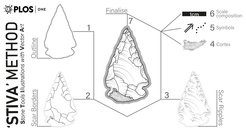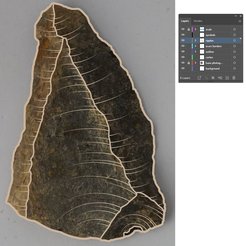A New Method for Illustrating Stone Tools
A new article in PLOS ONE offers a novel method for illustrating stone tools, developed to allow researchers, students and educators to produce high quality, publishable illustrations

Lithic illustrations are an important medium for communicating the technical and morphological characteristics of stone stools, offering invaluable insights into how the raw materials were shaped into useful tools and into the individuals and populations that created them. These illustrations have traditionally been hand-drawn by archaeological illustrators or researchers with extensive experience. In recent decades, however, lithic illustrations have been used less and less, owing to high-costs and the increased use of photography.
But lithic illustrations are still an invaluable tool for archaeology which cannot be easily substituted with any other recording method present today. Digital photography, although certainly the fastest and most efficient alternative, often fails to faithfully represent the artifact being studied. 3-D scanning has also been explored as a viable alternative, and although the technique can produce high-quality lithic illustrations, the cost of the equipment and the time required to produce a faithful scan are highly prohibitive.

In a new study published in PLOS ONE, Jacopo Cerasoni of the ‘Lise Meitner’ Pan-African Evolution research group at the Max Planck Institute for the Science of Human History offers a novel method for illustrating stone tools developed to allow researchers, students and educators to produce clear, competent and publishable illustrations. The STIVA method (Stone Tools Illustrations with Vector Art) traces reference photographs in vectorial graphics software, combining the ease and speed of digital photography with the representational power of hand-made illustrations.
The protocol for the STIVA method is available on protocols.io – an open-access platform for reproducible scientific methods. The optimized step-by-step method presents ten major sections for creating of a lithic illustration: photography, vectorial software configuration, scale, outline, scar borders, ripples, cortex, symbols, composition, and export.
“Modern vectorial technologies offer virtually limitless possibilities in the world of scientific imaging,” says Cerasoni. “The STIVA Method doesn’t only offer the opportunity to illustrate lithics in a clean and efficient manner, but it creates a framework for anyone to experiment and illustrate any other archaeological artefact or material.”

